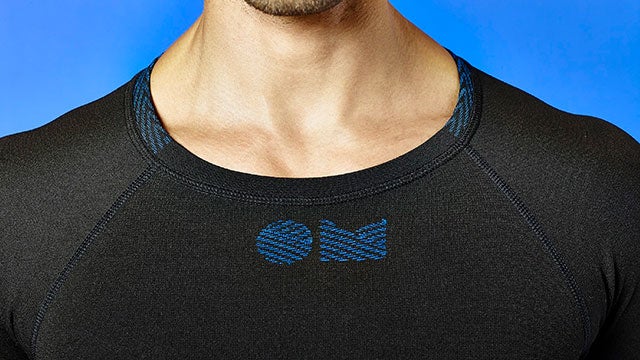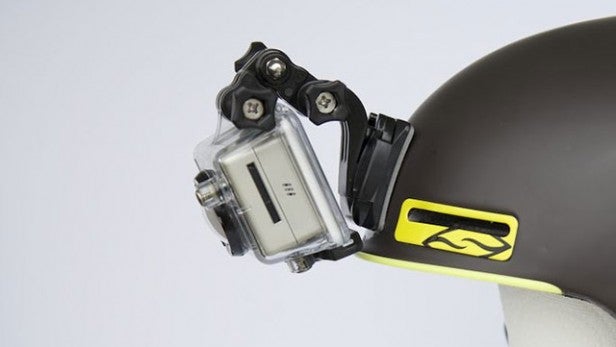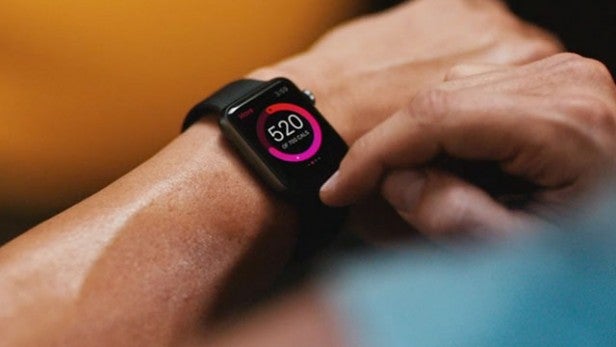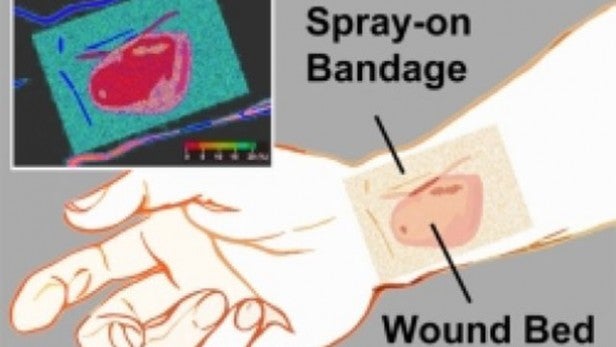Life-changing wearable tech: It’s not just smartwatches and fitness bands

From life-saving underwear to organ-reading bandages, technology is getting doctorate-level smart
Imagine if Apple unveiled a bra that could detect tumours. Or if Samsung’s next patent wasn’t a Google Glass killer, but a set of bandages that sent your vital signs from your home to your nurse. You can imagine the headlines… “Tim Cook to cure cancer!”. The news coverage would be phenomenal. Twitter would go into meltdown. Although most of the noise in the billion-dollar wearable tech industry, naturally, surrounds consumer bangles and clever watches, these medical life-savers are exactly the sort of wearable devices that are raising millions in funding and being developed and tested right now.
It’s apt to point out that, having mentioned the ‘bangles’ aspect of wearable tech, that it seems we’re probably not really going to see much in the way of neat bracelet-style accessories playing a vital part in clinics in the immediate future. This is primarily because doctors and physicians need wearable devices that can provide extremely accurate and consistently reliable data, rather than look nifty, which at the moment seems to be leading research towards smart clothing and strapping for patient monitoring, and head-mounted displays and wearable robotics for surgery and lab work. Intensive study continues in the field of brain and body implants feeding back to apps, but if it’s inside you then we’re not counting that as wearable.

As Duncan Stewart, director of research for technology, media and telecommunications at Deloitte Canada, tells TrustedReviews, “At this time, wearable head-mounted devices that have cameras, augmented reality displays and hands-free operation don’t appear to have significant consumer appeal, but the enterprise interest from my clients in these devices is very high.”
“These wearables don’t appeal to all enterprises equally,” he says. “Customer facing applications like banking or retail are unlikely in the near term. But medical, manufacturing and materials handling could occur in size in the next 24 months.” He continues, “Head-mounted wearables are likely to become standard inside drug labs”, but safety checks take time, as, he adds, “some industries that you would think would be rapid adopters may take a while”. We’ll see why adoption takes a while in a second, but first some products…
About that bra…
In 2012 a US company announced a prototype bra, worn under clothing, that records differences in body temperature, which are analysed to find tumours. You can’t really get more wearable than undergarments, so practicality issues – such as durability and impact of repeated washing – are at the forefront of the minds of researchers, doctors and patients. The company, Cyrcadia Health, is developing the project to offer “monthly breast wellness screening in the privacy of your own home”.
President and CEO, Rob Royea, is taking the tech into final clinical validation trials in the US in November, with intention to launch in Europe in mid-2015. The company has already raised over $3m in funding. Royea’s goal is not only detection, but “an international big data library with phenotype and genotype information on global breast cancer to reach the masses so desperately in need of new choices for breast cancer screening”. With 296,000 women in the US alone diagnosed with breast cancer annually, the product could significantly increase early detection for millions worldwide.
Another item that can’t get any more wearable is the humble bandage. Used since time immemorial, New Scientist reported earlier this year that a project called Bioscope – developed by nurses, engineers and computer scientists in Taiwan – is aiming to turn the common bandage into an all-dancing temperature and heart rate monitor, as well as a detector of bodily noises (thus enabling organ assessment). This data feeds back wirelessly to a computer. The sensor modules – which include a contact thermometer, accelerometer and microphones – are 3D-printed onto the bandage. The nurses can easily swap sensors in and out, again ticking the durability and cleanliness boxes, and can allow data to be collected remotely. Smart plasters, linked to research from Philips, are also still being talked about, having been touted since 2009.
However, with both of these innovations, the biggest hurdle between the lab and the GP – and, as mentioned earlier, the reason development takes such time – is receiving official clearance. As Paul Sonnier, founder and publisher of Digital Health, tells TrustedReviews: “Doctors rightfully want and expect anything that diagnoses a patient, or is an aid in that regard, to be accurate, reliable, and cleared by FDA. Any digital health solutions that provide a diagnosis, must be cleared by the FDA to be marketed and sold in the US.” He continues, “That process is outlined by the FDA and is much more involved than bringing most consumer devices to market, particularly because the claims of diagnosis must be validated, via a clinical trial. That is often a lengthy and costly process, which is a barrier to market entry.”
Outside the hospital
We obviously don’t mind too much what the wearables look like when prescribed by the doc, as long as they do their job effectively, but outside of the clinic most of us want discreetness. A company that’s latched on to the idea of many people seeking constant monitoring without requiring devices that might make them feel a little silly – we’re looking at you, Google Glass – is OMsignal. The Canadian company asks why should we strap on lots of accessories when we already wear clothes, and so has developed shirts that feed back remarkably in-depth health and fitness info, from everyday vital signs to warnings about breathing irregularity.
The immediate challenge with this type of wearable isn’t so much lengthy trials, but price; a pre-order sum of $199, for instance, gets you one bio-sensing running shirt, plus data module and charging cable. However, as humans demand more information about themselves, the general consensus is that this will become standard. As co-founder and CEO of OMsignal, Stephane Marceau, told the New York Times, “The first cars were completely blind. Then you had a gas gauge. Then a speedometer. Now you can’t imagine a car without these things. Smart clothing is starting to do the same thing for humans”.

Back to smartwatches…
Smartwatches, then, are perhaps destined to become what regular watches have always been – status symbols, fashion items… simple tools for basic tasks, such as time telling, but with those helpful add-ons such as calorie and step counters. Yes, they can still have their uses in professional environments – as Duncan Stewart points out, “Wrist-mounted wearables are also being experimented with, mainly for authentication at this point, but simple tasks, like clocking in or out, can also be done easily on a watch” – but for now they’re more useful life coaches than life savers, feeding you general “apple-a-day” advice to keep you from the doctor.
This isn’t a criticism, these things still make you active; as Paul Sonnier reminds us, with regards to the issue over whether consumer activity trackers are accurate enough, “It’s often most important to the patient and doctor knowing that physical activity is taking place”. However, as time goes on, your doctor will have a growing collection of clinical wearables to strap you into once you do encounter an actual medical problem.
Next, read our round-up of the best fitness trackers to buy


